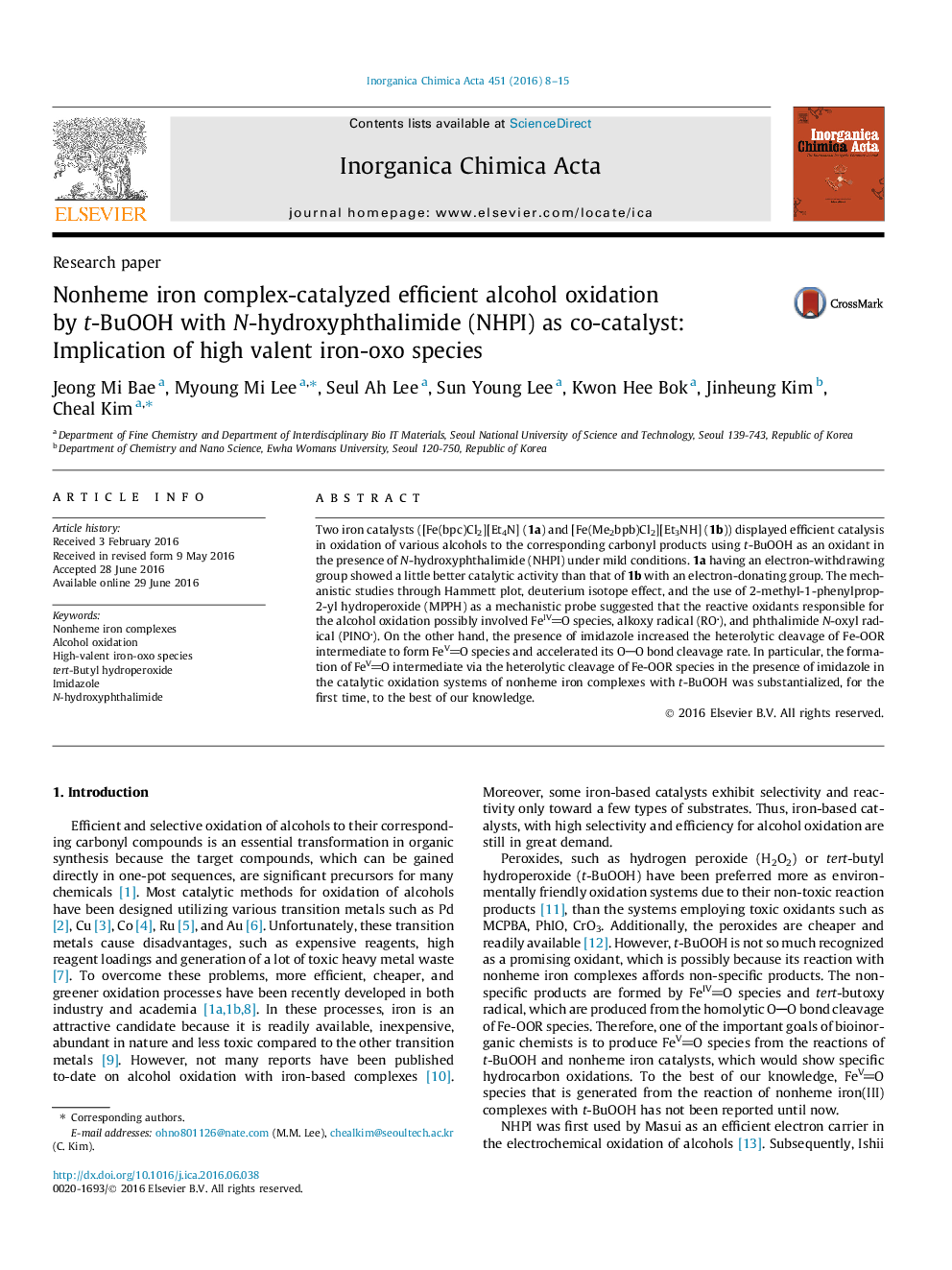| Article ID | Journal | Published Year | Pages | File Type |
|---|---|---|---|---|
| 1311921 | Inorganica Chimica Acta | 2016 | 8 Pages |
•Two iron catalysts displayed efficient catalysis in oxidation of various alcohols.•Reactive oxidants are FeIVO species, alkoxy radical (RO), and PINO.•Presence of imidazole increases formation of FeVO intermediate.
Two iron catalysts ([Fe(bpc)Cl2][Et4N] (1a) and [Fe(Me2bpb)Cl2][Et3NH] (1b)) displayed efficient catalysis in oxidation of various alcohols to the corresponding carbonyl products using t-BuOOH as an oxidant in the presence of N-hydroxyphthalimide (NHPI) under mild conditions. 1a having an electron-withdrawing group showed a little better catalytic activity than that of 1b with an electron-donating group. The mechanistic studies through Hammett plot, deuterium isotope effect, and the use of 2-methyl-1-phenylprop-2-yl hydroperoxide (MPPH) as a mechanistic probe suggested that the reactive oxidants responsible for the alcohol oxidation possibly involved FeIVO species, alkoxy radical (RO), and phthalimide N-oxyl radical (PINO). On the other hand, the presence of imidazole increased the heterolytic cleavage of Fe-OOR intermediate to form FeVO species and accelerated its OO bond cleavage rate. In particular, the formation of FeVO intermediate via the heterolytic cleavage of Fe-OOR species in the presence of imidazole in the catalytic oxidation systems of nonheme iron complexes with t-BuOOH was substantialized, for the first time, to the best of our knowledge.
Graphical abstractTwo iron catalysts ([Fe(bpc)Cl2][Et4N] (1a) and [Fe(Me2bpb)Cl2][Et3NH] (1b)) displayed efficient catalysis in oxidation of various alcohols to the corresponding carbonyl products using t-BuOOH as an oxidant in the presence of N-hydroxyphthalimide (NHPI) under mild conditions. The mechanistic studies through Hammett plot, deuterium isotope effect, and the use of 2-methyl-1-phenylprop-2-yl hydroperoxide (MPPH) as a mechanistic probe suggested that the reactive oxidants responsible for the alcohol oxidation possibly involved FeIVO species, alkoxy radical (RO), and phthalimide N-oxyl radical (PINO).Figure optionsDownload full-size imageDownload as PowerPoint slide
